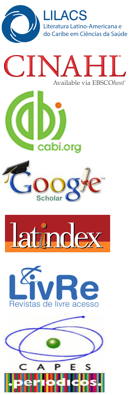Analysis of Lip Print in University Students from Vale do Jequitinhonha
DOI:
https://doi.org/10.17921/2447-8938.2021v22n3p212-215Resumo
Abstract
Cheiloscopy is the analysis of the lip prints, grooves, thicknesses, angles, and other structures of the lips that differentiate each individual in a similar way to biometrics. This study aimed to observe these lips characteristics and to verify if there is a labial pattern among the students of the UFVJM Dentistry course of that distinguishes them in genders. Fifty students were selected, photographed, and had their samples collected by printing their lips on transparent tape with wine 01 lipstick, evenly distributed with the aid of a flexible rod and attached on white paperboard and later classified for obtaining the data required for statistical analysis. When analyzing lip thickness, it was found that most of the students had thick lips - 78%, whereas regarding the position of the labial commissure, 50% of the students presented horizontal disposition. Through the classification system of Suzuki and Tsuchihashi the types of furrows were classified, type II being the most common in this research. Despite the evidence that, among the volunteering students , female lips are thinner than male lips, there were no statistically significant differences between men and women. However, there is a need for more studies that seek to validate and disseminate this technique in a standardized way so that it is a complementary tool in Forensic Dentistry.
Keywords: Cheiloscopy. Forensic Anthropology. Forensic Dentistry.
Resumo
Queiloscopia é a análise das impressões labiais, sulcos, espessuras, ângulos e demais estruturas dos lábios, que diferenciam cada indivíduo de forma similar à biometria. Este estudo teve como objetivo observar as características labiais e verificar se existe um padrão labial entre os estudantes matriculados no curso de Odontologia da UFVJM que os distingue em gênero. Para isto, cinquenta alunos foram selecionados, fotografados e tiveram deus dados coletados por meio da impressão labial em fita adesiva transparente com batom vinho 01, distribuído uniformemente com o auxílio de uma haste flexível e anexada em cartolina branca e, posteriormente, classificadas para obtenção dos dados necessários à análise estatística. Ao analisar a espessura labial, constatou-se que a maioria dos estudantes possuíam lábios grossos - 78%, já em relação a posição da comissura labial 50% dos alunos apresentaram disposição horizontal. Através do sistema de classificação de Suzuki e Tsuchihashi foram classificados os tipos de sulcos, sendo o tipo II o mais comum entre os sujeitos da pesquisa. Apesar da comprovação de que, entre os estudantes voluntários, os lábios femininos possuem menor espessura que os masculinos, não existindo diferenças estatisticamente significantes entre homens e mulheres. Contudo, existe a necessidade de mais estudos que busquem validar e difundir esta técnica de forma padronizada para que seja uma ferramenta complementar na Odontologia Forense.
Palavras-chave: Queiloscopia, Antropologia Forense, Odontologia Legal.
Downloads
Downloads
Publicado
Como Citar
Edição
Seção
Licença
Os autores devem ceder expressamente os direitos autorais à Kroton Educacional, sendo que a cessão passa a valer a partir da submissão do artigo, ou trabalho em forma similar, ao sistema eletrônico de publicações institucionais. A revista se reserva o direito de efetuar, nos originais, alterações de ordem normativa, ortográfica e gramatical, com vistas a manter o padrão culto da língua, respeitando, porém, o estilo dos autores. As provas finais serão enviadas aos autores. Os trabalhos publicados passam a ser propriedade da Kroton Educacional, ficando sua reimpressão total ou parcial, sujeita à autorização expressa da direção da Kroton Educacional. O conteúdo relatado e as opiniões emitidas pelos autores dos artigos são de sua exclusiva responsabilidade.


